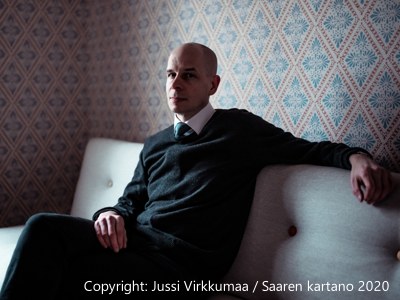Instrumentation: Flute (doubling Picc.), Oboe (dbl. E.H.), Clarinet in Bb (dbl. Bass Cl.), Bassoon (dbl. Cbsn.), Tuba or Trombone, Accordion, Piano, Violin, Violoncello, Contrabass
Duration: 8‘30‘‘
Publisher: Schott Music
FP: Oct. 4, 2007, Dresden (ensemble courage, Cond.: Titus Engel)
Commissioned by the Europäische Zentrum der Künste Hellerau, celebrating the 10-year-anniversary of the ensemble courage (Dresden)
Radio broadcasts: MDR Oct. 11, 2007
Further performances:
Sept 29, 2009, Växjö (ISCM World New Music Days, Swedish premiere, Ensemble Norbottenneo/Petter Sundkvist)
Dec 2, 2011, Dresden
CD: WERGO
Introduction:
The title achteinhalb initially refers to nothing else but the duration of the piece of exactly eight and a half minutes. With regard to my other works, however, the „meaninglessness“ of the title is of peculiar significance: generally, the titles of my compositions always contain allusions to the often complex musical and non-musical ideas the music deals with.
achteinhalb differs also with regard to its sound from my other compositions. The basic sound character is partly dry, raw and gruff, but does not make use of percussion instruments; at times, noisy sounds especially in the piano part take over the function of percussions. The material consists of quite simple elements which only in combination form more complex textures. The form and dramaturgy are also comparatively straightforward – but (like already in my short opera Informationen über Bartleby) the beginning of the piece does not coincide with the beginning ‚in content‘. The latter is, in fact, positioned at the end of the first third of the composition and starts out with a long passage of short, mostly asynchronous impulses in the respective lowest register of all instruments. These pulse sequences are more and more stretched apart and transferred into sustained sounds that move upwards in the range of the instruments. At the ‚physical‘ beginning of the piece – which is actually the fourth of altogether five merging sections – a low, dull murmuring appears in addition to these sustained notes; both textures resolve into a sophisticated noisy passage, during which the ensemble turns into a little machine that runs a bit out of the round.
The cinematically educated listener will of course associate the title with Fellinis film. If one assumes an interpretation of 8½ (Otto e mezzo) as description of artistic self-assessment and and search for orientation, there might be found certain references to the piece, without drawing conclusions to deeper analogies.
